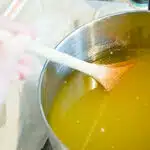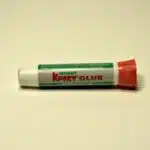As a professional painting technician, it is imperative to maintain a clean and tidy appearance while on the job. Despite taking necessary precautions, sometimes paint can make its way onto your skin. While it may seem like a minor inconvenience, leaving paint on your skin for an extended period of time can lead to irritation and even infection. Therefore, it is essential to know how to properly remove paint from your skin.
There are various methods for removing paint from skin, but not all are effective or safe. Some methods may even cause harm to the skin. In this article, we will provide you with tried-and-true techniques for removing paint from your skin without causing damage or discomfort. With these tips in mind, you can confidently tackle any painting project without worrying about unsightly stains on your hands and arms.
Why Removing Paint From Skin Is Important
Ensuring skin safety is of utmost importance when it comes to painting. A professional painter understands the significant risks that come with leaving paint on the skin. Not only can it cause irritation and discomfort, but it can also lead to more severe health problems.
Paint contains various chemicals that can be harmful to the skin if left on for too long. These chemicals can penetrate the skin and cause allergic reactions or even chemical burns. If not removed promptly, paint residue can clog pores, leading to acne breakouts and other skin irritations.
Therefore, it is crucial to remove any traces of paint from the skin as soon as possible after coming into contact with it. Taking the necessary steps to prepare your skin for paint removal can help prevent any adverse health effects associated with leaving paint on your skin.
Preparing Your Skin For Paint Removal
Skin protection is essential when preparing for paint removal. Before starting the process, it’s important to ensure that your skin is covered with protective gear such as gloves and long-sleeved shirts. This will prevent the paint from coming into contact with your skin and causing irritation or other adverse reactions.
One of the most common paint removal mistakes people make is using harsh chemicals without proper skin protection. These can cause severe burns, blisters, and other injuries. Always read the label before using any chemical-based products and follow all safety instructions carefully.
Another mistake people often make is not taking breaks when doing prolonged paint removal tasks. This can lead to fatigue, which can cause accidents and injuries. It’s crucial to take frequent breaks to rest your muscles, rehydrate, and refuel before continuing with the task at hand.
To avoid these mistakes, make sure to prioritize your skin protection by wearing appropriate gear before beginning any paint removal task. Taking frequent breaks throughout the process will also help you stay focused and energized while reducing the risk of accidents or injuries. In the next section, we’ll discuss how to effectively remove paint from your skin using soap and water without causing further irritation or damage.
Using Soap And Water
When it comes to removing paint from skin, using soap and water is one of the most important techniques to know. Not only is it effective in getting rid of the paint, but it is also gentle on the skin. This method works particularly well for water-based paints, which can be easily removed with just soap and water.
To use this technique, start by wetting the affected area with warm water. Then, apply a small amount of hand soap or dish soap onto the skin and gently scrub the area until the paint starts to lift off. Be sure to rinse the area thoroughly with warm water once all of the paint has been removed.
It’s important to note that this technique may not work as well for oil-based paints or if the paint has already dried on the skin. In those cases, other techniques such as using oil or petroleum jelly may be necessary. However, for fresh water-based paint stains on your skin, using soap and water is an easy and effective solution.
Applying Oil Or Petroleum Jelly
As a professional painting technician, I understand the frustration of paint accidentally getting on your skin. Luckily, there are various methods to remove it, and one of them is by using oil or petroleum jelly. This method is particularly useful for removing small amounts of paint that have dried onto the skin.
When using this method, it’s important to take precautions to avoid any adverse reactions. Petroleum jelly and oil can be messy and may stain clothing, so it’s advisable to wear old clothes or an apron. Additionally, if you’re allergic to petroleum products or have sensitive skin, it’s best to use an alternative method.
To apply oil or petroleum jelly, simply rub a generous amount onto the affected area and let it sit for a few minutes. The oil or petroleum jelly will loosen the paint from your skin, making it easier to wipe away with a cloth or tissue. Be sure to wash your skin thoroughly after removing the paint residue.
Using alternative methods such as soap and water or nail polish remover may also be effective in removing paint from your skin. However, if these methods don’t work for you, utilizing rubbing alcohol may be another option. We’ll discuss how to do this in the next section.
Utilizing Rubbing Alcohol
After applying oil or petroleum jelly to the affected area, another option for removing paint from skin is utilizing rubbing alcohol. Rubbing alcohol can effectively dissolve and remove paint, but it is important to note that this method may not be suitable for those with sensitive skin. Additionally, there are alternatives to using rubbing alcohol that can still effectively remove paint.
One alternative to using rubbing alcohol is using nail polish remover. This product contains acetone which can dissolve the paint on the skin. However, like rubbing alcohol, it can also cause irritation on sensitive skin. Another alternative is using olive oil or coconut oil. These oils can break down the paint and make it easier to wipe away without causing irritation.
If choosing to use rubbing alcohol, it is important to test a small area of skin first before applying it to a larger area. This will help determine if there will be any adverse reactions such as redness or burning. It is also recommended to use a cotton ball or swab dipped in the rubbing alcohol and gently rub the affected area until the paint begins to come off.
Trying vinegar as another alternative for removing paint from skin can be effective as well. Vinegar has acetic acid which can break down the bonds between the paint and skin making it easier to wipe away. However, like before, testing a small area of skin first is recommended before applying it more broadly.
Trying Vinegar
Using vinegar to remove paint from skin is a common household remedy. Vinegar contains acetic acid, which can break down the bonds between the paint and the skin. However, its effectiveness may depend on the type of paint and how long it has been on the skin.
To use vinegar for removing paint from the skin, soak a cotton ball or cloth in white vinegar and apply it to the affected area. Leave it on for a few minutes before rubbing gently with a clean cloth or paper towel. Repeat this process until all paint is removed. It is important to note that vinegar may cause irritation or dryness of the skin, so it should be used with caution.
While vinegar can be an effective method for removing some types of paint from skin, it may not work for all situations. In cases where the paint is thick or has dried on the skin, other methods such as using baking soda and water or using a commercial solvent may be necessary. Additionally, if there are any cuts or open wounds on the skin, it is not recommended to use vinegar as it may cause further irritation and pain.
Using Baking Soda And Water
- To create a paste for removing paint from skin, mix baking soda with a small amount of water until it forms a thick paste.
- Once the paste is made, carefully apply it to the skin, taking care to avoid contact with any eyes or other sensitive areas.
- The paste should be allowed to stay on the skin for a few minutes, allowing the baking soda to absorb the paint.
- After the allotted time, use a damp cloth to gently rub the paste away.
- If the paint has not been completely removed, reapply the paste and repeat the process.
- Once the paint has been completely removed, rinse the area with warm water to remove any residual paste.
Making A Paste
When it comes to removing paint from skin, baking soda and water are a popular combination. One way to use this mixture is by making a paste. To create the paste, you will need baking soda and water as your main ingredients. You can mix them together in equal parts until you have a smooth consistency.
If you want to add more power to your paste, there are other ingredients that you can include. For example, lemon juice or vinegar can help break down the paint on your skin. Additionally, adding a bit of olive oil or coconut oil to the paste can moisturize your skin and prevent dryness.
To apply the paste, simply spread it over the affected area and let it sit for a few minutes. Then, gently scrub the area with a soft cloth or sponge until the paint begins to lift off. Rinse with lukewarm water and repeat as needed until all paint is removed. With this easy method of creating a mixture for paint removal, you can quickly get rid of any unwanted marks on your skin without causing any damage or irritation.
Applying The Paste
When it comes to removing paint from skin, using baking soda and water is a popular and effective method. However, simply mixing baking soda and water may not be enough to get rid of tough stains. That’s where the benefits of paste come in. By creating a paste with baking soda and other ingredients, you can enhance the power of the mixture and make it more effective at removing paint.
Different types of paste can be used depending on your needs. For example, adding lemon juice or vinegar can help break down the paint on your skin, while olive oil or coconut oil can prevent dryness and moisturize your skin. You can also experiment with different ratios of ingredients to find what works best for you.
Once you have created your desired paste, applying it is easy. Simply spread the mixture over the affected area and let it sit for a few minutes before gently scrubbing with a soft cloth or sponge. Rinse with lukewarm water and repeat as needed until all paint is removed. With this simple yet powerful method, you can quickly get rid of any unwanted marks on your skin without causing any damage or irritation.
Removing The Paste
When it comes to removing stubborn paint from skin, the use of baking soda and water is a popular DIY method. However, sometimes a simple mixture of baking soda and water may not be enough. This is where the benefits of using natural paste removers come in.
There are different methods for removing the paste after application. One common way is to use warm water and a soft cloth or sponge to gently wipe away the residue. If the paste is particularly stubborn, you can try using a gentle scrubbing motion with a brush or toothbrush.
Another effective method for removing the paste is to use oil-based products such as coconut oil or olive oil. These oils can help break down any remaining residue while also moisturizing your skin. Simply apply a small amount of oil to the affected area and massage gently before wiping clean with a soft cloth or sponge. With these methods for removing stubborn paint, you can easily and safely get rid of any unwanted marks on your skin without causing damage or irritation.
Applying Hand Sanitizer
The task of removing paint from skin can be a daunting one, especially if the paint has dried and hardened. While using baking soda and water is an effective method for removing paint, there are alternative methods that can also be employed. One such method is using hand sanitizer.
Hand sanitizer has been found to be quite effective in removing paint from skin. Its alcohol content acts as a solvent that breaks down the bond between the paint and the skin. To use hand sanitizer, simply apply it directly to the affected area and rub gently until the paint begins to come off. Wash your hands thoroughly with soap and water afterwards.
It is important to note that while hand sanitizer is effective for many types of paint, it may not work on all types. Additionally, repeated use of hand sanitizer can dry out the skin, so it should not be used excessively. In cases where hand sanitizer does not work or you do not have any on hand, another alternative method that can be used is using baby wipes.
Using Baby Wipes
- New paint can be removed from the skin with baby wipes by gently rubbing the wet wipe against the paint until it begins to come off.
- For old paint, rubbing alcohol can be applied to the skin with a damp cloth to soften the paint before using a baby wipe to remove the paint.
- A soft bristled brush can also be used to gently scrub the paint off the skin.
- When removing paint from the skin, it is important to avoid harsh scrubbing and instead use gentle, circular motions to ensure the skin is not damaged.
Removing New Paint
As a professional painting technician, it is important to always wear protective clothing when working with paint. However, sometimes accidents happen and paint can end up on your skin. If you find yourself in this situation, one alternative way of removing the new paint is by using baby wipes.
Firstly, gently wipe the affected area with a baby wipe. Be sure to use a fresh wipe each time to avoid any cross-contamination. If the paint is still not coming off, try using a bit of soap and warm water to help loosen it up. Continue wiping until the paint is completely removed.
It’s worth noting that while baby wipes can be effective for removing new paint from skin, they may not work as well for dried or older paint stains. In these cases, it’s recommended to seek out alternative methods of removal such as using specialized solvents or seeking professional assistance. Remember, safety should always be your top priority when working with any type of paint or chemical substance.
Removing Old Paint
When it comes to painting, accidents can happen. As a professional painting technician, it is important to always be prepared with the right tools and knowledge to deal with any mishap that may occur. While baby wipes can be effective for removing new paint from skin, they may not work as well for removing old or dried paint stains. In this case, alternative methods of removal should be sought out.
When dealing with old or dried paint stains, the type of paint will determine the best course of action for removal. Removing acrylic paint can be achieved using rubbing alcohol or nail polish remover, while oil-based paints require more heavy-duty solvents such as mineral spirits or turpentine. It is important to follow all safety precautions when using these solvents and to properly dispose of them according to local regulations.
If you are unsure about how to remove a particularly stubborn stain, seeking out professional assistance may be necessary. As a painting technician, it is important to prioritize safety at all times and recognize when a job may require specialized expertise. By being knowledgeable about different methods of removing old paint stains and knowing when to seek professional help, you can ensure that you are providing the best service possible to your clients.
Trying A Magic Eraser
Using Magic Eraser
One of the common methods of removing paint from skin is by using a Magic Eraser. This product is designed to remove tough stains and can be used on different surfaces, including the skin. To use the Magic Eraser, wet it with water and rub it gently over the painted area. The eraser should lift off the paint, leaving your skin clean.
Despite its effectiveness, there are potential risks when using a Magic Eraser. For instance, if you rub too hard or for too long, you may irritate your skin or cause abrasions. Additionally, some people may have an allergic reaction to the chemicals in the eraser. Therefore, it is essential to use caution when applying this method and discontinue its use if you experience any adverse effects.
When utilizing a Magic Eraser to remove paint from your skin, here are some tips to keep in mind:
- Use a gentle touch: Avoid rubbing too hard as this can cause irritation or abrasions.
- Test on a small area: Before using the eraser on a larger surface area, test it on a small patch of skin to see if you have any allergic reactions.
- Rinse thoroughly: After removing the paint with the eraser, rinse your skin thoroughly with water.
In summary, using a Magic Eraser can be an effective method of removing paint from your skin quickly. However, there are potential risks involved, such as irritating your skin or causing allergic reactions. By following these tips and exercising caution when using this method, you can safely remove paint from your skin without damaging it. Next up is another popular method that involves utilizing lemon juice to get rid of paint stains on your skin.
Utilizing Lemon Juice
After trying a Magic Eraser and finding it ineffective in removing paint from your skin, you may want to consider trying out natural remedies. One excellent alternative to using harsh chemicals is using lemon juice. Not only is it an effective method for removing paint, but it also has several benefits as a natural remedy.
Lemon juice is a powerful and safe solvent that can break down the bonds of paint on the skin without damaging the surrounding tissue. It contains citric acid, which acts as a mild bleaching agent that can lighten any stains left behind by the paint. Additionally, lemon juice has antibacterial properties that can help prevent infection or inflammation caused by cuts or scrapes while painting.
While lemon juice is an excellent choice for removing paint from skin, there are other natural remedies worth exploring. These include vinegar, baking soda, olive oil, and coconut oil. Each of these alternatives has unique benefits that make them ideal for various situations. However, before trying any of these methods, it’s important to do research and ensure that they’re safe for use on your skin type and condition.
Using Toothpaste
Toothpaste is a common household item that can be used to remove paint from the skin. It is effective because it contains abrasive particles that can scrub away the paint without damaging the skin. Toothpaste also contains ingredients like baking soda and hydrogen peroxide, which have stain-removing properties.
To use toothpaste to remove paint from your skin, simply apply a small amount of toothpaste to the affected area and rub gently in circular motions. Rinse with warm water and repeat if necessary. Toothpaste is a safe and inexpensive option for removing paint from the skin.
Alternative toothpaste options include using whitening toothpaste, which contains additional ingredients like activated charcoal or baking soda for extra cleaning power. However, it is important to note that not all toothpaste brands are created equal, so be sure to read labels and choose one that has effective stain-removing properties.
- Rubbing gently in circular motions
- Using warm water
- Applying a small amount of toothpaste
- Reading labels to choose an effective brand
- Trying alternative options such as whitening toothpaste
Next, we will explore an alternative option for removing paint from the skin: trying makeup remover. This option may be particularly helpful for individuals who have sensitive skin or who are looking for a more gentle solution.
Trying Makeup Remover
Using makeup remover can be an effective way to remove paint from your skin. While there are other alternatives, such as using soap and water or oil-based products, makeup remover is specifically designed to break down and dissolve makeup, which includes paint.
When choosing a makeup remover, it’s important to consider the type of paint that needs to be removed. Water-based paints may come off easily with just soap and water, but oil-based paints may require a stronger remover. It’s also important to choose a product that is gentle on the skin and does not contain harsh chemicals that could cause irritation or damage.
The effectiveness of using makeup remover will depend on the amount of paint on the skin and how long it has been there. If the paint is fresh, it should come off relatively easily with a few swipes of the remover. However, if the paint has dried or been left on for an extended period of time, it may require more effort or multiple applications. Overall, using makeup remover can be a safe and efficient way to remove paint from your skin. In the next section, we will discuss how applying acetone or nail polish remover can also be an effective option for removing stubborn paint stains.
Applying Acetone Or Nail Polish Remover
After trying makeup remover, if paint still persists on the skin, one can try using alternative solvents to get rid of it. These solvents include rubbing alcohol, vegetable oil, and baby oil. All three are easily available at home and can be effective in removing paint from the skin.
Rubbing alcohol is a common household item that can be used as an alternative solvent to acetone. It is important to note that rubbing alcohol should not be used on broken or irritated skin, as it may cause further irritation. Vegetable oil and baby oil are gentle alternatives that can help remove paint from the skin without causing any harm. These oils work by breaking down the paint particles and making them easier to wipe off.
When using acetone or nail polish remover, it is important to take precautions. Acetone is a strong solvent that can irritate the skin if not handled properly. To avoid this, always use gloves when handling acetone or nail polish remover and avoid contact with eyes and mouth. Additionally, use in a well-ventilated area to prevent inhalation of fumes.
Further tips and precautions for safe paint removal include avoiding harsh scrubbing of the affected area, as this can cause further irritation and damage to the skin. Always remember to wash the affected area with soap and water after using any solvent to remove paint from the skin. If irritation or redness persists after trying these methods, seek medical attention immediately.
Further Tips And Precautions For Safe Paint Removal
As a professional painting technician, it is crucial to prioritize precautionary measures when removing paint from skin. One of the most common mistakes people make is using harsh chemicals or solvents to remove paint, which can cause skin irritation and even chemical burns. Instead, opt for gentler alternatives such as baby oil or vegetable oil, which effectively break down the paint without damaging your skin.
Another important precautionary measure to take is wearing protective clothing and gloves when working with paint. While it may seem inconvenient, this simple step can prevent paint from getting on your skin in the first place. Additionally, always wash your hands thoroughly after handling paint or any other chemicals to avoid accidental ingestion or absorption through the skin.
If alternative methods such as oil or soap do not work, it is recommended to seek professional medical help rather than resorting to harsher chemicals or tools. A dermatologist can provide safe and effective solutions for removing stubborn paint without causing harm to your skin. It’s better to be cautious and take the necessary steps rather than risking long-term damage by attempting DIY methods that could potentially worsen the situation.
In summary, when it comes to safely removing paint from skin, taking precautionary measures should be a top priority. Using gentle alternatives like baby oil or vegetable oil, wearing protective clothing and gloves, and seeking professional medical help if necessary are all essential steps in ensuring safe removal of paint without harming your skin. Remember that prevention is key – taking a few extra precautions can save you from potential harm in the long run.
Conclusion
Removing paint from skin is an essential skill for anyone who works with paints. The process of removing paint can be tedious, but it is necessary to keep your skin healthy and clean. There are many ways to remove paint from skin, including using soap and water, applying oil or petroleum jelly, utilizing rubbing alcohol, trying makeup remover, applying acetone or nail polish remover. Each method varies in effectiveness depending on the type of paint used.
For instance, a professional painter recently encountered a situation where they had accidentally spilled oil-based paint on their hands while painting a room. After attempting to wash it off with soap and water, the paint remained stubbornly stuck to their skin. They then tried applying petroleum jelly and rubbing alcohol but found these methods ineffective as well. Finally, they applied acetone to their skin which broke down the oil-based paint allowing them to easily wipe it off with a cloth.
In conclusion, removing paint from skin requires patience and experimentation with different methods until finding what works best for you and the type of paint involved. It is important to prepare your skin before attempting removal and take precautions such as wearing gloves when working with paints in the future to avoid further incidents. By following these tips and being diligent in taking care of your skin, you can ensure that any accidental spills or stains will not cause any lasting damage or discomfort.
Image Credits
- “skin” by akashayi (featured)





























